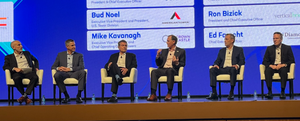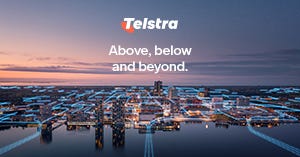Telcos say suppliers and partners are the big carbon problem
A survey of members of the Joint Alliance for CSR suggests Scope 3 emissions account for over 70% of telcos' total emissions, of which most are generated in the supply chain.

Like many other industries, telecom is currently facing the difficult task of cutting the carbon emissions blamed for climate change. The bad news is that most telco emissions are generated not directly by their own operations but by suppliers and customers, in what are called Scope 3 emissions – at least according to a report by the Joint Alliance for CSR (JAC), an industry group. In a survey carried out by EPI Consulting, 84% of JAC's telco members said Scope 3 emissions account for more than 70% of their overall emissions.
JAC is an association of 26 telecom operators that say they are working together to improve corporate social responsibility (CSR). It was founded in 2010 by Deutsche Telekom, Orange and Telecom Italia and today includes other heavyweights such as AT&T, BT, Telefónica, Vodafone and Verizon.
Scope 3 emissions are a broad category that includes emissions generated during the production of goods and equipment used by telcos, such as network equipment, fiber optic cables and even desk chairs in offices. These emissions also cover products offered to clients, such as set-top boxes, mobile phones and routers. Transportation, the delivery of goods and services, waste disposal, energy used further up the value chain and even employee commuting also fall into this bracket.
So far, 82% of JAC's 26 members have adopted a Scope 3 emissions reduction target. Another 3% have a net-zero target that includes Scope 3 emissions – based on Light Reading's calculations, this translates into a single company (or 0.78 of one, to be more precise).
For JAC companies, between 60% and 80% of Scope 3 emissions come from the supply chain. Of the 26 companies, 24 saw network equipment, such as basestations, servers and antennas, as a priority category, with 15 of them also pointing to installations like fiber-to-the-home and 12 adding hardware including cables and fiber optics. Meanwhile, 20 companies said consumer products like phones and accessories were a priority, with 18 firms also adding set-top boxes and TV boxes to this category.

(Source: JAC)
JAC members are likely to be telcos most active in reducing emissions. If so, then less proactive telcos outside the group would have higher Scope 1 and 2 emissions, the ones they directly generate, and Scope 3's overall share would be lower. Nevertheless, the numbers are still close to 2019 CDP data from 19 operators as compiled by Oliver Wyman. Back then, Scope 3 accounted for 67.8% of overall emissions.
Engaging with suppliers
To reduce these emissions, it is crucial to engage with suppliers. JAC says best practices include embedding clauses into contracts that require suppliers to meet interim sustainability goals. Companies can also increase the weighting of sustainability scorecards when awarding contracts. Reducing emissions generated by products sold on to customers should also have a knock-on impact on downstream Scope 3 emissions, by putting more energy-efficient smartphones into customer hands, for instance.
Other recommendations from JAC include aligning carbon reduction plans with SBTi standards, which means having valid, science-based targets, while measuring and reporting emissions reductions based on recognized standards. Members are also advised to develop an analysis of supply chain hotspots to understand where supplier engagement should be prioritized. Maintaining lifecycle assessments for products and services, meanwhile, could support later decarbonization while helping customers reach their own targets.
This somewhat echoes recommendations on Scope 3 emissions released by the GSMA this week, which propose carrying out a broad assessment first and then focusing on the most carbon-emitting areas, given the large amount of data involved. Interestingly, the GSMA notes that "operators should not expect to achieve a complete assessment when doing it for the first time."
Related posts:
— Tereza Krásová, Associate Editor, Light Reading
About the Author(s)
You May Also Like











